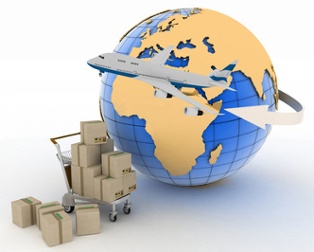By: Bruce H. Leeds, Senior Counsel
I have sometimes joked about “Newton’s Law of Export-Import” that “whatever goes out comes back.” Often a company becomes an importer simply because they exported something and either the product (or part of the product), is returned to the U.S. In fact, imports of returned goods to the U.S. are some of the most common transactions, but also a major source of risk.
A logical, but inexperienced, person might think that articles returned to the U.S. from a foreign country are duty free, but that’s not necessarily correct. For many years there has been a duty free exemption for American Goods Returned under item 9801.00.10 of the Harmonized Tariff, but it didn’t apply to “everything” being returned.
That provision required that the returned article be a product of the United States, with the exact translation being, “made in this country.” Foreign made articles are dutiable, even if duty has been paid on them before. HTS 9801.00.10 further requires that the article not be advanced in value, or improved in condition, while outside the US. This means that the exported article cannot be physically changed in any way that improves it, or makes it into a different product.
The HTS and regulations require that the importer provide documentation to support their claim under 9801.00.10. Specifically, the regulations require (1) a Foreign Shipper’s Declaration and (2) an Importer’s Declaration signed by an officer of the importer, or employee/agent, holding a power of attorney. The regulations go on to say that Customs may require additional information and that may include a manufacturer’s declaration. The latter is also known as a manufacturer’s affidavit and consists of a statement on the letterhead of the actual manufacturer of the article stating it was made in the United States. The affidavit is signed by an employee or officer of the manufacturer having knowledge of the facts.
If the shipment contains (10) different articles made by (10) different manufacturers, the importer may have to provide (10) different manufacturer’s affidavits.
This sounds like a lot of work, because it is! Many importers have decided not to claim entry under 9801.00.10, or to not claim it unless the duty and MPF saved are worth the effort.
But wait….there is major relief in sight. In February of this year the President signed into law the Trade Facilitation & Trade Enforcement Act of 2015. One of the provisions of this legislation is to change the language of 9801.00.10. The following wording was added to the text of this HTS provision: “or any other products when returned within 3 years after having been exported”. The addition of this language means that the classification will apply to returned articles of the U.S. and also to articles exported within the last 3 years, regardless of origin.
Thus, a company could re-import two articles: An instrument made in the U.S. and an analyzer made in Germany. If the company has a manufacturer’s affidavit for the instrument showing it was made in the U.S., and export documentation for the analyzer showing it was exported during the last 3 years, both articles could be entered free of duty and MPF under the revised 9801.00.10.
The previous requirements that the articles be not advanced in value or improved in condition while outside the U.S. would still apply.
The provision should be implemented soon. Hopefully revised regulations setting forth the exact entry requirements will follow. What documents or data required to be shown to prove export in the last 3 year period need to be defined, but may include export invoices and/or packing sheets, export bills of lading, or air waybills, and extracts of the Electronic Export Information filing in the Automated Export System, including ITN number. This should provide an additional incentive to keep good export records and have them available.
The American Goods Returned provision has traditionally been a challenge to work with. Maybe now it will be a bit better.

























